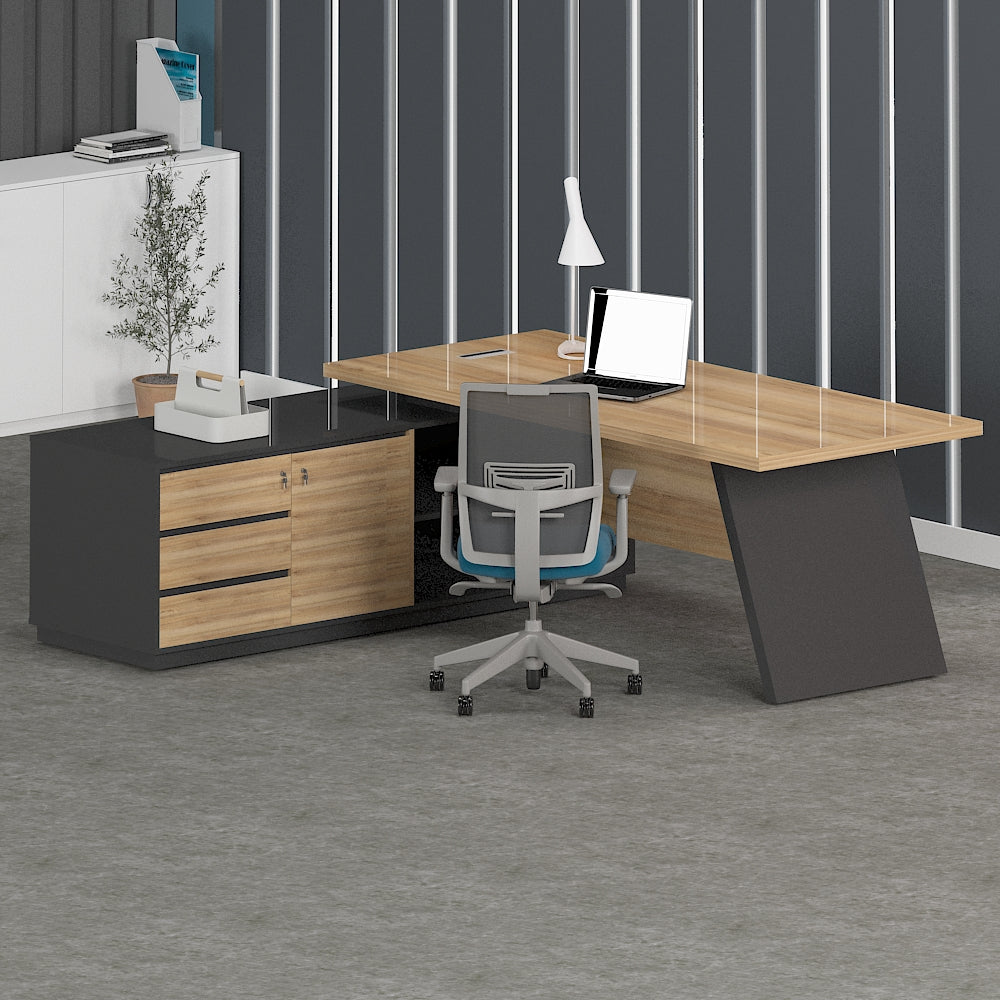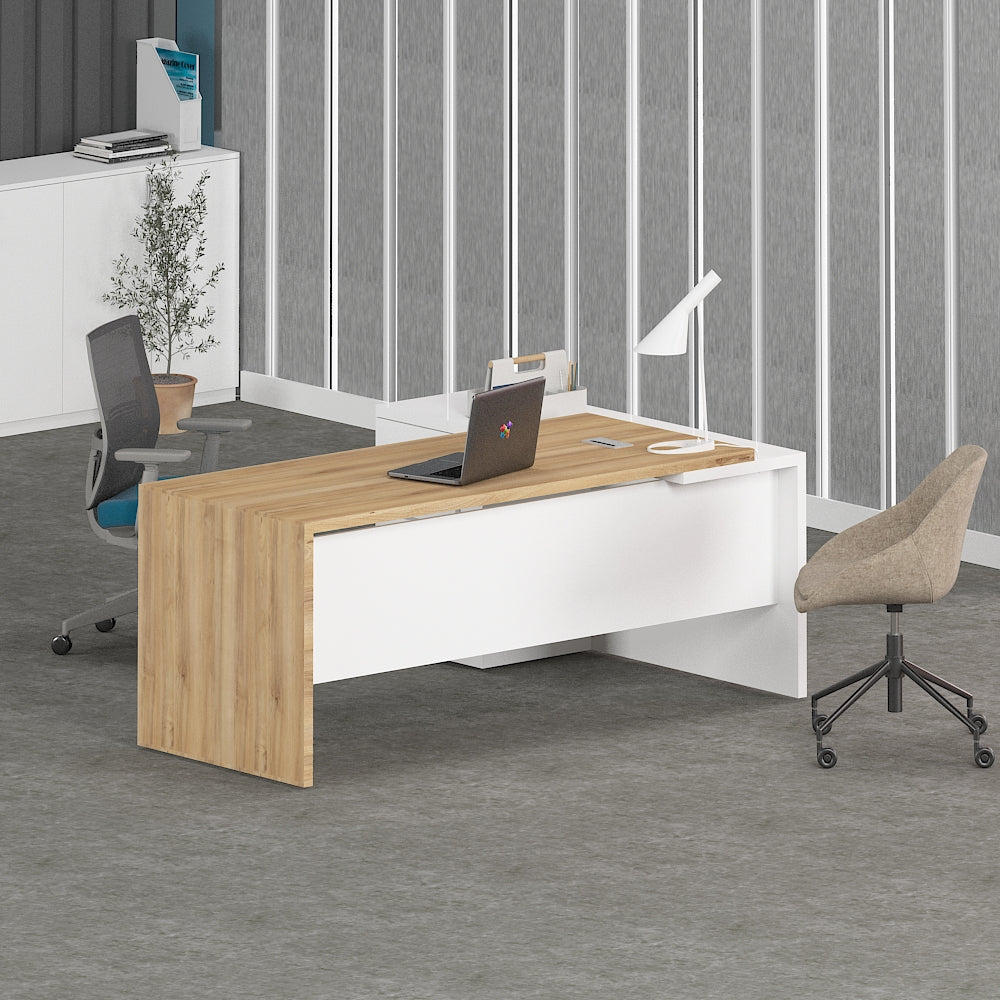In the realm of furnishing an managerial office, the selection of a desk is crucial. The managerial table is not just a functional piece of furniture; it embodies business acumen and authority. Among executive table for office godrej of executive tables available, corner and rectangular designs are prominent. Both offers distinct benefits and can significantly influence the productivity and aesthetics of the work environment.
Recognizing the differences between these two styles can help you make an informed decision that meets your requirements and complements your office layout. From considerations like office executive table design and size to cost and material options, exploring these factors will ensure you select the ideal table for your workspace. Whether you're looking for a contemporary glass top or a classic wooden design, this guide will explore the advantages of both L-shaped and straight executive tables, helping you find the perfect centerpiece for your office.
Design Comparison
When considering selecting among L-shaped and linear executive tables, the aesthetic plays a crucial role in determining how functional and appealing your office environment . L-shaped tables are often favored due to their spaciousness and versatility, providing more surface area for work and allowing for efficient collaboration. They can fit snugly into corners, maximizing floor space while providing a workspace that can accommodate various office tasks and activities.
Conversely, straight executive tables exude a classic and professional look that can enhance the formal ambiance of the workspace. Their linear design creates a clean, organized appearance, making them suitable for traditional office setups. Straight tables are perfect for smaller spaces where a more compact design is required, as they can optimize the office layout without taking away from too much space.
Both designs come in various materials and finishes, with options such as wooden and glass tops available for both styles. Office executive tables, regardless of shape, must be selected not only based on appearance but also on how they align with the office's overall aesthetic and functionality needs.
Price Considerations

When selecting a table for your office executive, cost is frequently a critical factor that influences the decision process. The financial plan fluctuates widely based on the design, components, and manufacturer. Office executive tables can vary from budget-friendly options, typically made of particleboard or laminate, to high-end models constructed from solid wood or featuring high-quality finishes. Renowned brands like Herman Miller usually come at a higher price, which reflects their standing for quality.
Another important aspect to consider is the pricing difference between L-shaped tables and straight executive tables. L-shaped tables often require a higher price due to their size and dimensions and flexible design, which can accommodate more working area and storage solutions. On the other hand, straight executive tables may be less expensive and can fit well in compact office spaces, making them attractive to budget-conscious buyers.

In conclusion, when evaluating costs, it is important to consider additional expenses such as executive desk accessories and matching chairs. Coupling your executive desk with an ideal chair set can enhance your workspace's overall appearance and functionality. It's recommended to look for sets that provide the optimal value without compromising on quality, ensuring a wise investment for your office space.
Space Requirements

When choosing between L shaped versus conventional executive tables, grasping the space requirements is crucial. L-shaped tables usually demand increased area because of their configuration, stretching across two boundaries of the office. This setup is ideal for larger offices that have plenty of space free, facilitating unrestricted movement and extra office accessories. In contrast, linear executive tables are more suited for smaller spaces, delivering a sleek appearance that maximizes utility without overwhelming the space.
It is critical to evaluate the office area carefully before making a decision. Evaluate the entire size of the room and the location of additional furniture including office chairs and filing cabinets. An L-shaped table might yield increased surface area for work and organization, but it can likewise hinder traffic flow if not placed properly. On the contrarily, a linear table can deliver a direct workflow, but could fail to lend itself to as much desk space for paperwork and equipment.
In furthermore to the table type, reflect on the potential requirement for additional items, like a side table or additional storage solutions. These items should be factored into the overall space planning to guarantee that the office stays efficient and neat. Finally, selecting executive table design office must align with the needs of the spatial dynamics and your unique working style.
Design and Usability
When choosing an executive table, the balance between design and usability is essential. L-shaped executive tables are often preferred for their contemporary appearance and effective use of area. They provide a larger work surface, making them perfect for simultaneous tasks and holding various workspace accessories. The design can improve the visual appeal of an office while boosting productivity, as the shape allows for improved organization and accessibility of materials.
On the other hand, linear executive tables offer a more traditional and classic look, which can be advantageous in settings where professionalism and seriousness are highlighted. These tables are adaptable and can integrate smoothly into both contemporary and classic office designs. Their simple structure allows for convenient placement against walls or in open office layouts, providing ample workspace without overloading the room’s space.
Ultimately, the decision between L-shaped and straight managerial tables should consider the particular needs of the manager and the complete office design. While L-shaped tables might thrive in team-oriented or versatile spaces, linear tables could more effectively serve environments where a polished professional appearance is prioritized. Evaluating both style and usability will confirm the chosen table meets both practical needs and visual preferences.


